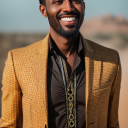focusing on their essential characteristics:
Somali:
Somali is an Afroasiatic language, primarily spoken in Somalia, Djibouti, and parts of Ethiopia and Kenya. It's the official language of Somalia and a national language in Djibouti.
Key points:
1. It has a unique writing system called Osmanya, though Latin script is more commonly used today.
2. Somali has complex verb conjugations and uses tone to distinguish meaning.
3. It's known for its rich oral tradition, including poetry and storytelling.
4. The language has many loanwords from Arabic due to historical and religious influences.
5. Somali has about 16-22 million speakers worldwide.
Arabic:
Arabic is a Semitic language and one of the world's major languages. It's the official language in 26 countries and the liturgical language of Islam.
Key points:
1. Classical Arabic is used in formal contexts and religious texts, while Modern Standard Arabic is used in media and literature.
2. There are numerous spoken Arabic dialects that can differ significantly from each other.
3. Arabic script is written from right to left and doesn't typically include short vowels in writing.
4. The language has significantly influenced many other languages, especially in Islamic regions.
5. Arabic has a rich literary tradition dating back over 1500 years.
6. It's known for its intricate grammar, including a system of trilateral roots.
7. Arabic has around 420 million speakers globally, making it the 5th most spoken language in the world.
Both languages have played crucial roles in their respective regions' cultural and religious development, and both have influenced other languages to varying degrees.
.
Hire
Ahmed J.



